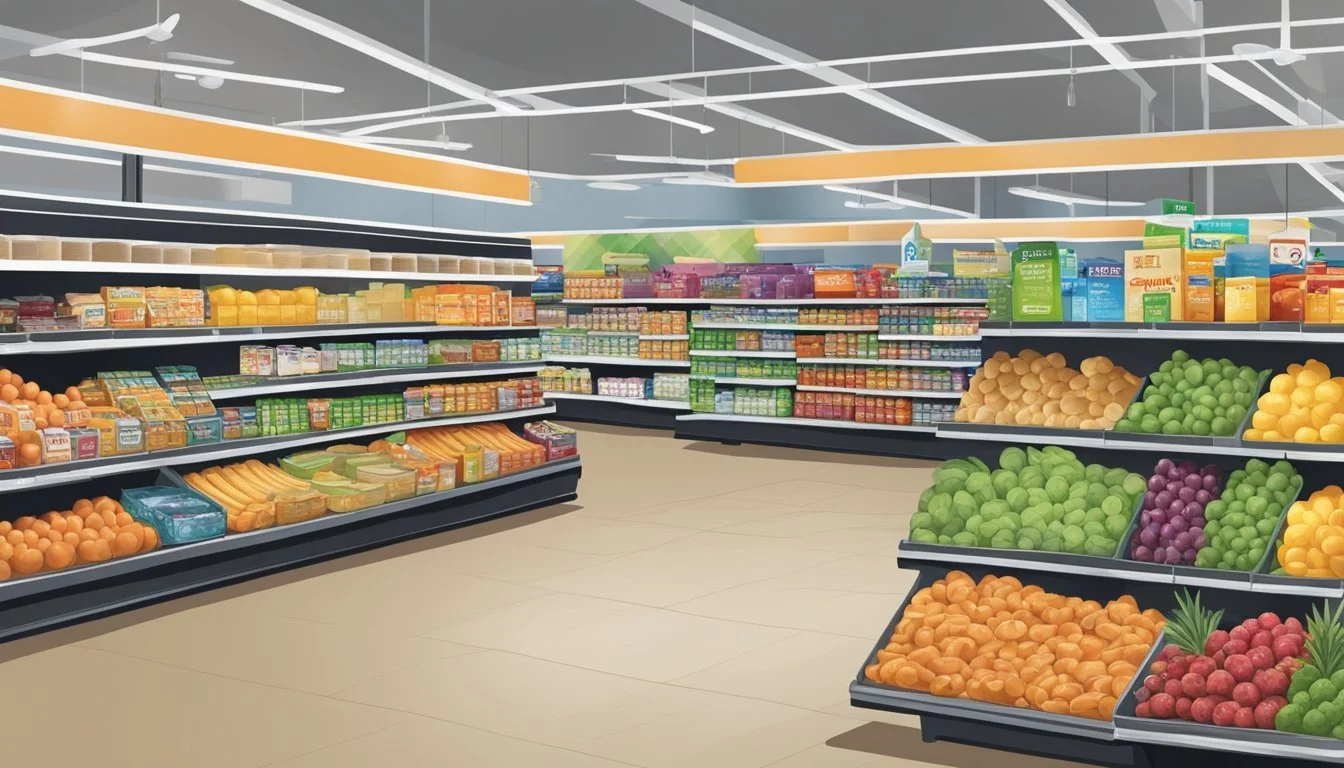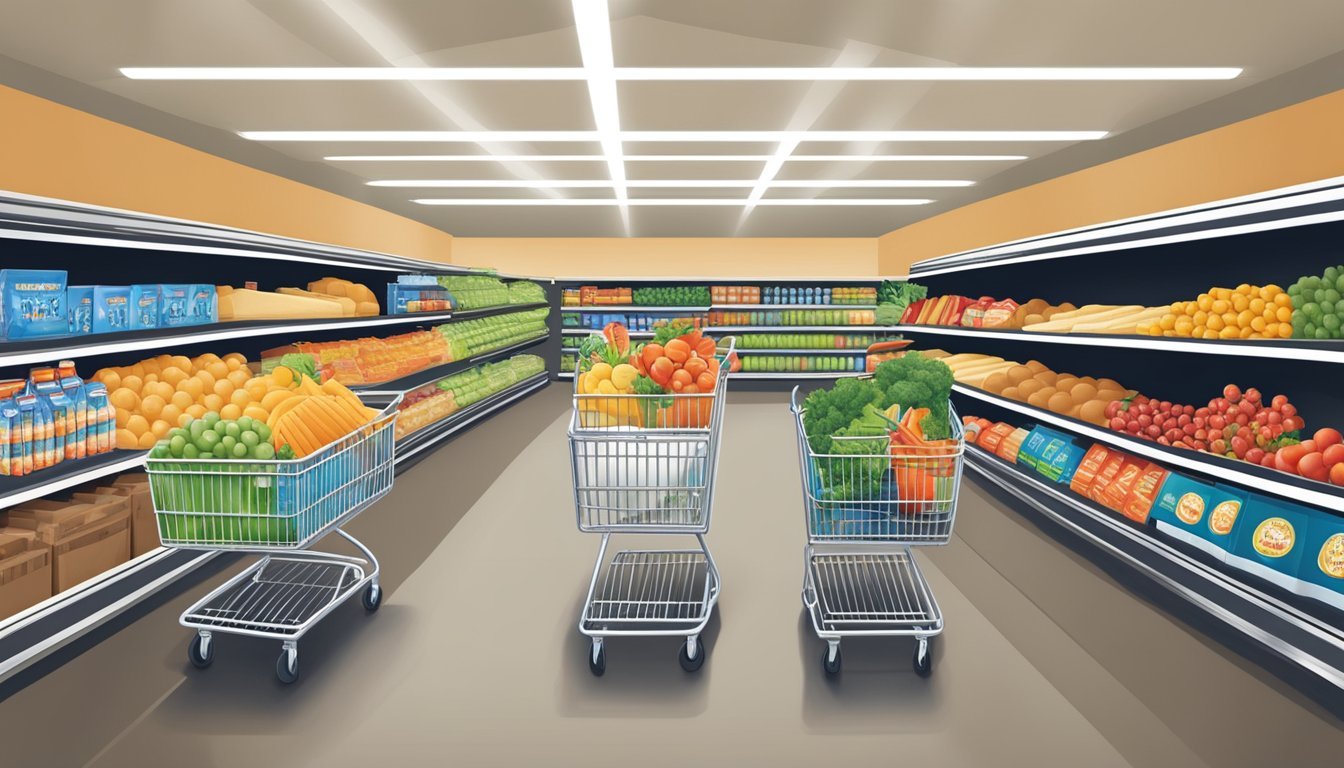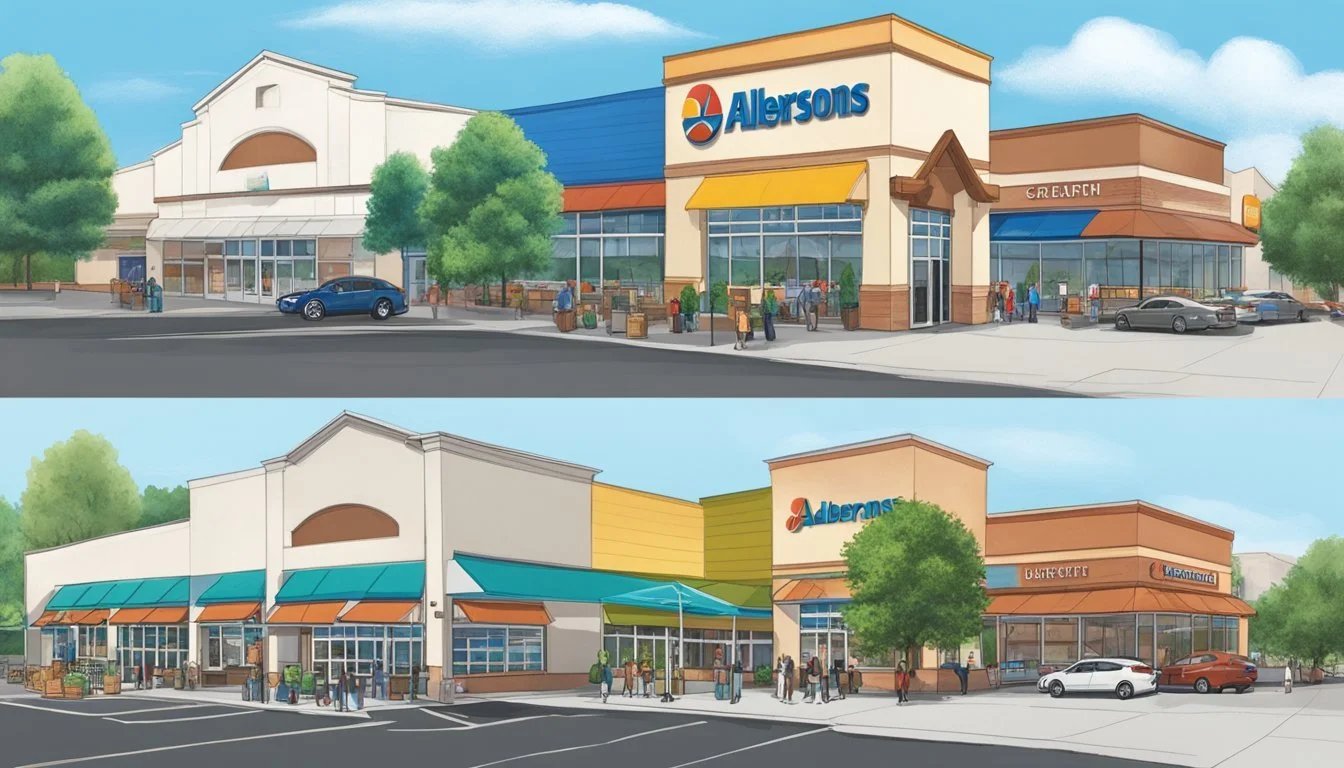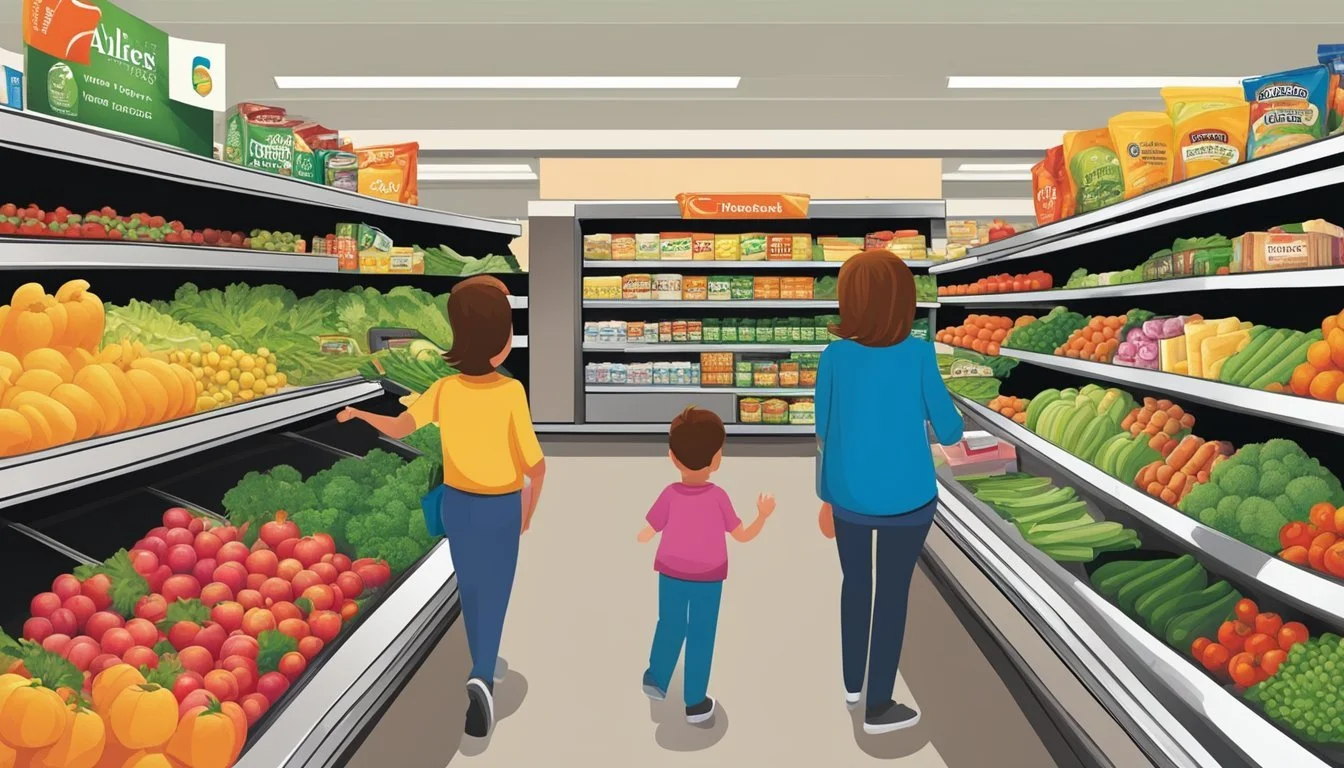Albertsons vs Save Mart
Comparing Prices, Selection, and Customer Experience
Grocery shopping is an essential part of everyday life, and choosing the right store can significantly impact both your wallet and your dining experience. Albertsons and Save Mart are two popular grocery chains that cater to different regions and demographics in the United States.
Albertsons, a well-established supermarket chain, is known for its wide selection of high-quality products and a medium to high price point. The store has a strong presence in the Midwest and Southern regions, offering customers convenience and accessibility. Save Mart, on the other hand, primarily serves the West Coast, particularly California and Nevada, with a focus on fresh produce and competitive pricing.
When comparing Albertsons and Save Mart, customers may find that Albertsons offers a more extensive range of premium products, while Save Mart provides better value for budget-conscious shoppers. The choice between these two grocery stores ultimately depends on individual preferences, location, and priorities, such as product variety, price, or shopping experience.
Company Overview
Albertsons and Save Mart are prominent grocery chains with distinct histories and regional presences. Both companies have grown through acquisitions and expansions over the decades.
History of Albertsons
Albertsons began in 1939 when Joe Albertson opened his first grocery store in Boise, Idaho. The company quickly expanded across the western United States.
In the 1960s and 1970s, Albertsons acquired several smaller chains, fueling its growth. By the 1990s, it had become one of the largest supermarket chains in the country.
The company faced challenges in the early 2000s, leading to a merger with Safeway in 2015. This created one of the largest food and drug retailers in the U.S.
Today, Albertsons operates over 2,200 stores across 34 states under various banners, including Safeway, Vons, and Jewel-Osco.
History of Save Mart
Save Mart's story began in 1952 when Nick Tocco and Bob Piccinini opened the first store in Modesto, California. The company focused on providing fresh, quality products at competitive prices.
Throughout the 1980s and 1990s, Save Mart expanded by acquiring smaller regional chains. This strategy helped them establish a strong presence in Northern California and Nevada.
In 2007, Save Mart purchased 130 Albertsons stores in Northern California and Nevada, significantly increasing its market share.
The company now operates over 200 stores under the Save Mart, Lucky, and FoodMaxx brands. In 2022, Save Mart was acquired by the Jim Pattison Group, a Canadian conglomerate.
Comparative Analysis
Albertsons and Save Mart compete in the grocery landscape, each offering distinct advantages to shoppers. Their differences span across multiple aspects of the grocery shopping experience.
Store Presence and Accessibility
Albertsons operates over 2,200 stores across 34 states, giving it a broader national presence. Save Mart focuses primarily on California and Nevada, with about 200 locations. This regional concentration allows Save Mart to tailor its offerings to local preferences.
Albertsons stores are often found in urban and suburban areas, while Save Mart has a strong presence in smaller towns and rural communities. This difference in location strategy impacts accessibility for different consumer groups.
Quality of Products
Both chains prioritize product quality, but with different emphases. Albertsons is known for its wide selection of organic and natural products, particularly in its fresh produce department. The chain has invested in sourcing high-quality meats and seafood.
Save Mart prides itself on its locally sourced produce and partnerships with regional farmers. This focus on local sourcing often results in fresher fruits and vegetables reaching store shelves more quickly.
Price and Affordability
Save Mart generally offers lower prices on everyday items and staple groceries. The chain frequently runs promotions and discounts to attract budget-conscious shoppers.
Albertsons prices tend to be slightly higher, especially on specialty and organic items. However, the chain offers a robust loyalty program and digital coupons that can lead to significant savings for regular customers.
Range of Products
Albertsons typically boasts a larger product range, including more international and gourmet options. The chain's stores often feature extensive deli and bakery departments with a variety of prepared foods.
Save Mart focuses on a more streamlined selection, emphasizing popular brands and regional favorites. While the product range may be smaller, it's carefully curated to meet the needs of its core customer base.
Customer Shopping Experience
Albertsons stores are often larger, offering wider aisles and more spacious layouts. Many locations feature in-store pharmacies, Banks, and Starbucks cafes, creating a one-stop shopping experience.
Save Mart stores are generally more compact, which can make for quicker shopping trips. The chain emphasizes friendly, personalized customer service, with staff often knowing regular customers by name.
Store Brands and Exclusive Products
Albertsons offers several private label brands, including Signature Select and O Organics. These store brands cover a wide range of products from basic staples to premium organic options.
Save Mart's private label offerings are more limited but focus on value. The chain's store brands include Pacific Coast Selections and Sunny Select, which offer competitive pricing on everyday items.
Customer Perceptions and Ratings
Consumer opinions and experiences play a crucial role in evaluating grocery stores. Albertsons and Save Mart both have established reputations, but their customer perceptions differ in key areas.
Analyzing Consumer Surveys and Reports
ConsumerReports ranks supermarkets based on various factors. While Albertsons appears in their rankings, Save Mart is not explicitly mentioned. Albertsons tends to fall in the middle to lower range of rankings compared to other major chains.
A recent market basket survey compared prices at different supermarkets. Albertsons was found to be pricier than some competitors, potentially impacting customer perceptions of value.
Save Mart's absence from national surveys makes it challenging to directly compare its performance. However, regional reports suggest it maintains a loyal following in its operating areas.
Online Reviews and Feedback
Customer reviews on platforms like Yelp and Google provide insights into shopping experiences. Albertsons stores generally receive mixed feedback, with average ratings around 3 out of 5 stars.
Common praise for Albertsons includes:
Wide product selection
Clean stores
Helpful staff
Frequent complaints mention:
Higher prices
Long checkout lines
Inconsistent product availability
Save Mart reviews tend to be more positive, often averaging 3.5 to 4 stars. Customers frequently commend:
Competitive pricing
Fresh produce
Friendly service
Loyalty and Repeat Business
Both Albertsons and Save Mart have implemented loyalty programs to encourage repeat business. Albertsons' Just for U program offers personalized discounts and gas rewards, which many customers appreciate.
Save Mart's loyalty program, while less extensive, still provides value to regular shoppers. The company's focus on local communities has fostered a sense of connection with customers in its operating regions.
Customer retention rates suggest Save Mart has a slightly edge in maintaining a loyal customer base within its markets. This may be attributed to its regional focus and community engagement efforts.
Business Models and Practices
Albertsons and Save Mart employ distinct strategies to attract customers and maintain profitability. Their approaches to marketing, pricing, and supply chain management shape their competitive positions in the grocery industry.
Marketing Strategies
Albertsons focuses on a multi-channel approach, leveraging its large supermarket chain presence. They heavily promote their Just for U loyalty program, offering personalized deals and digital coupons. The company invests in targeted advertising campaigns across traditional and digital media.
Save Mart emphasizes community engagement and local partnerships. They sponsor regional events and support local produce suppliers. Their marketing often highlights fresh, locally-sourced products. Save Mart also utilizes social media to connect with customers and promote weekly specials.
Both chains have expanded their grocery delivery options in response to rising consumer demand for convenience.
Pricing Tactics
Albertsons employs a high-low pricing strategy. They offer regular sale prices on select items to drive store traffic. Loss leaders, such as discounted staples, entice customers to make additional purchases. The chain also provides competitive pricing on their private label brands.
Save Mart adopts a more everyday low price approach, similar to WinCo. They focus on maintaining consistently competitive prices across their product range. Save Mart runs fewer dramatic promotions but aims to build customer trust through stable pricing.
Both stores use data analytics to optimize pricing and promotions based on local market conditions and consumer behavior.
Supply Chain Efficiency
Albertsons leverages its large scale to negotiate favorable terms with suppliers. They operate centralized distribution centers to streamline inventory management. The company invests in technology to optimize routing and reduce transportation costs.
Save Mart prioritizes regional sourcing to support local economies and ensure product freshness. They maintain strong relationships with local farmers and producers. The chain uses a hub-and-spoke distribution model to efficiently serve their smaller network of stores.
Both Albertsons and Save Mart are investing in automation and AI to improve forecasting accuracy and reduce waste. They're also exploring sustainable packaging options to appeal to environmentally conscious consumers.
Industry Comparison
Albertsons and Save Mart operate in a highly competitive grocery landscape. Their positioning relative to major rivals and market trends significantly impacts their appeal to consumers.
Assessment Against Major Competitors
Albertsons faces stiff competition from retail giants like Walmart, Kroger, and Costco. Walmart's everyday low prices and extensive product selection pose a particular challenge. Kroger's strong private label offerings and digital initiatives have boosted its market share. Costco's bulk pricing model attracts value-conscious shoppers.
Save Mart competes more regionally, primarily in California and Nevada. It contends with Safeway (owned by Albertsons), Raley's, and Trader Joe's in these markets. Trader Joe's unique product mix and loyal customer base make it a formidable competitor.
Both chains lag behind Aldi and Lidl in terms of price competitiveness. They also face growing pressure from Amazon's grocery expansion, including Whole Foods and Amazon Fresh stores.
Market Position and Growth
Albertsons holds a stronger national presence, ranking as the second-largest supermarket chain in North America. Its 2020 merger with Safeway significantly expanded its footprint. The company operates over 2,200 stores across 34 states under various banners.
Save Mart maintains a more focused regional presence with approximately 200 stores in California and Nevada. While smaller in scale, this concentration allows for tailored local market strategies.
Both chains have invested in e-commerce capabilities to compete with Amazon and Walmart's online grocery offerings. Albertsons has seen notable growth in digital sales, while Save Mart partners with Instacart for delivery services.
Emerging Grocery Trends
Health and wellness remain key drivers in the grocery industry. Both Albertsons and Save Mart have expanded their organic and natural product selections to meet this demand. However, they face strong competition from specialists like Sprouts and Whole Foods in this segment.
Meal kits and prepared foods represent another growing trend. Albertsons has introduced its own meal kit line, while Save Mart focuses on grab-and-go options in its stores.
Sustainability initiatives are gaining importance among consumers. Both chains have implemented recycling programs and are working to reduce food waste. Albertsons has set specific sustainability goals, including plans to reduce plastic use in its private label packaging.
Food Quality and Safety
Albertsons and Save Mart prioritize food quality and safety through rigorous standards and practices. Both chains focus on providing fresh, high-quality produce and ensuring compliance with health regulations.
Freshness and Shelf Life
Albertsons implements a "Fresh Fill" program to stock shelves with the freshest items daily. Their produce departments receive deliveries 5-7 times per week. Save Mart emphasizes locally-sourced produce to minimize transit time. Both stores use temperature-controlled storage and display cases.
Albertsons rotates stock frequently using a "first in, first out" system. Save Mart trains staff on proper handling to extend shelf life. Both chains clearly label expiration dates and remove expired items promptly.
Health and Regulatory Compliance
Albertsons and Save Mart adhere to FDA and USDA regulations. Both chains conduct regular food safety audits and inspections. Albertsons uses a food safety management system called SafeMark. Save Mart implements a Hazard Analysis Critical Control Point (HACCP) program.
Staff at both stores receive food safety training on proper handling, storage, and sanitation. Albertsons and Save Mart maintain clean facilities with strict hygiene protocols. Both chains quickly remove recalled products and notify customers of safety issues.
Employee Welfare and Community Involvement
Albertsons and Save Mart prioritize employee well-being and community engagement. Both companies implement programs to support their staff and contribute to local communities, though their approaches differ in some aspects.
Staff Training and Morale
Albertsons offers comprehensive training programs for its employees. The company provides opportunities for career advancement and skill development. Employees receive regular performance evaluations and feedback to improve their work.
Save Mart focuses on creating a positive work environment. The company encourages open communication between management and staff. Save Mart offers competitive wages and benefits packages to attract and retain talented employees.
Both chains recognize the importance of employee morale. They organize team-building activities and employee appreciation events. These efforts aim to foster a sense of belonging and loyalty among staff members.
Corporate Social Responsibility
Albertsons demonstrates its commitment to social responsibility through various initiatives. The company partners with local food banks to address hunger in communities. Albertsons also supports environmental sustainability efforts, including reducing food waste and promoting recycling.
Save Mart engages in community outreach programs. The company sponsors local events and charitable organizations. Save Mart emphasizes supporting family-oriented causes, such as youth education and health initiatives.
Both retailers encourage their employees to participate in volunteer activities. They organize company-wide service days and provide opportunities for staff to give back to their communities. These programs help strengthen the connection between the stores and the neighborhoods they serve.
Conclusion
Albertsons and Save Mart each offer distinct advantages for shoppers. Their pricing strategies, product quality, and store experiences differ in key ways that impact customer satisfaction and value.
Summary of Findings
Albertsons provides a wider selection of premium and specialty products. The chain focuses on high-quality offerings, especially in its produce and deli departments. Albertsons stores often feature in-house bakeries and expanded organic sections.
Save Mart emphasizes competitive pricing on everyday staples. The company runs frequent sales and promotions to attract budget-conscious shoppers. Save Mart stores tend to have a no-frills layout designed for efficient shopping trips.
Researchers found Albertsons prices averaged 15-20% higher than Save Mart for comparable items. However, Albertsons' loyalty program and digital coupons can help offset this gap for regular customers.
Final Verdict on Albertsons vs Save Mart
Save Mart emerges as the price winner for shoppers prioritizing savings on groceries. Its lower everyday prices and aggressive promotions make it ideal for families on a budget.
Albertsons offers superior product variety and quality, particularly for specialty items. Shoppers willing to pay more for premium selections and an upscale store environment may prefer Albertsons.
Key saving tips: Use store loyalty cards, check weekly ads, and compare unit prices. Stock up on sale items at Save Mart. Look for Albertsons' digital coupons on higher-end products.
The best choice depends on individual preferences for price vs. quality and selection. Budget-focused shoppers should opt for Save Mart, while those seeking premium options may find Albertsons a better fit.









